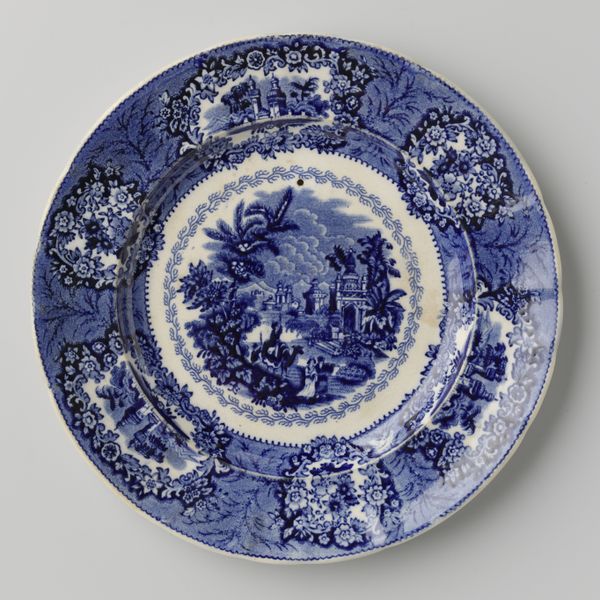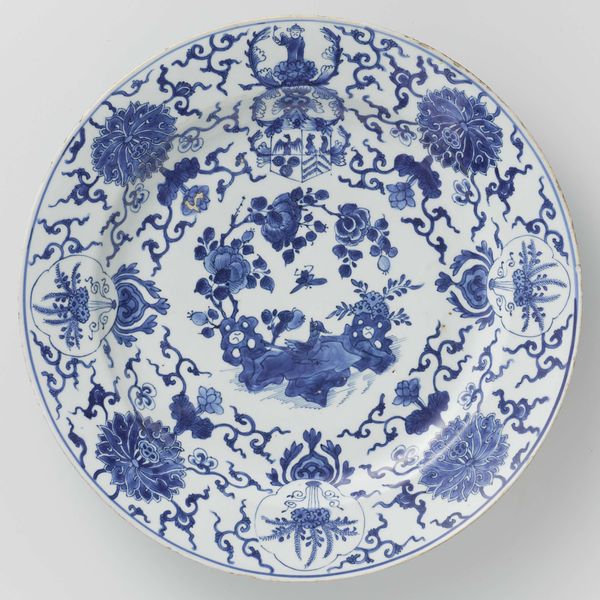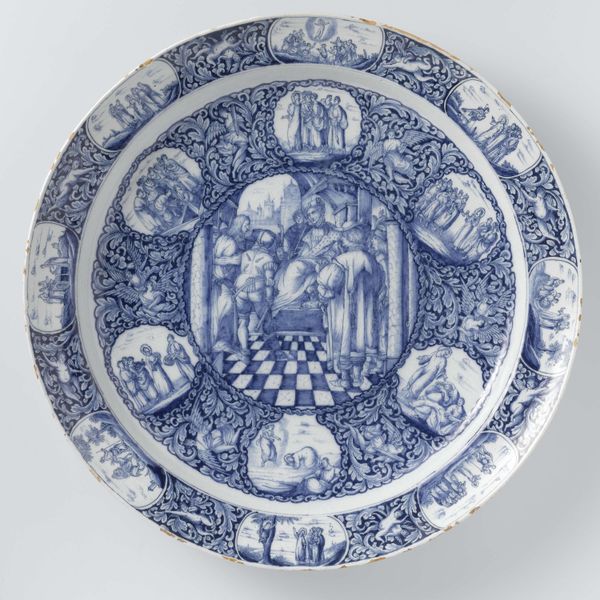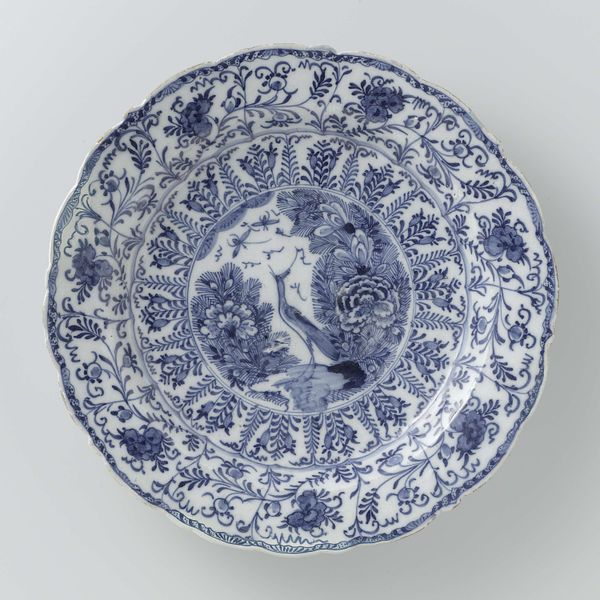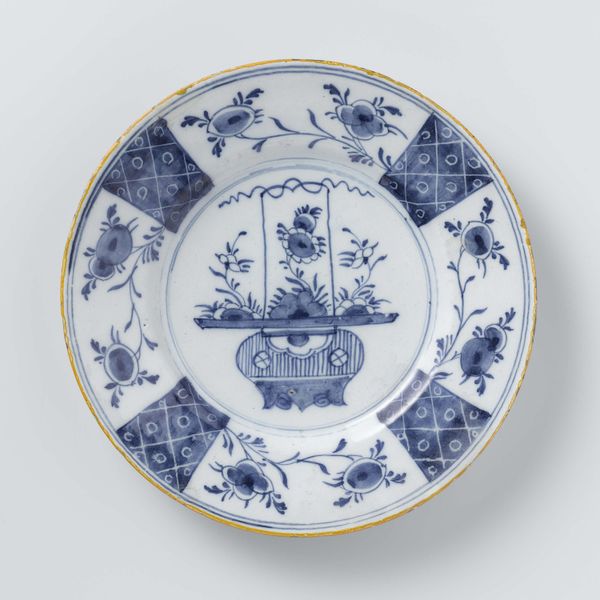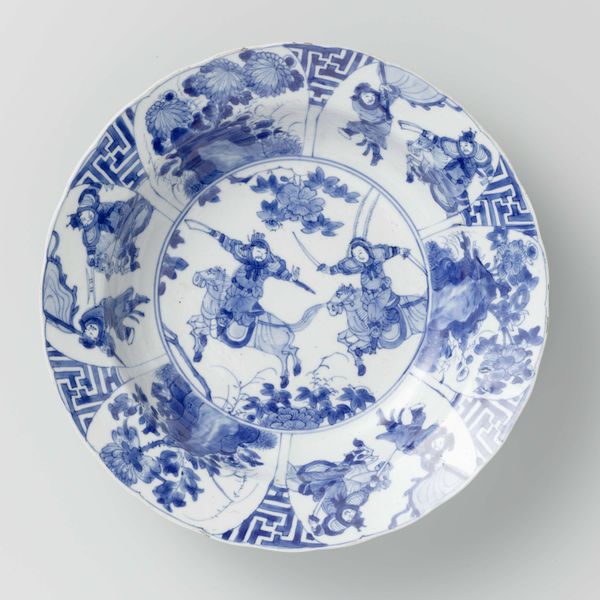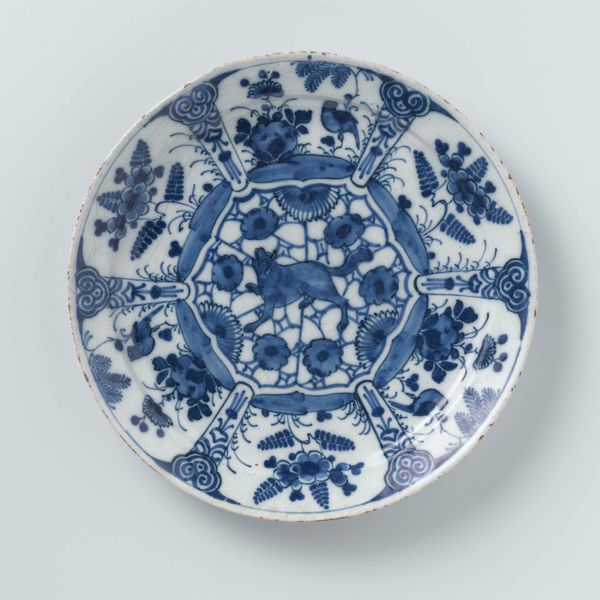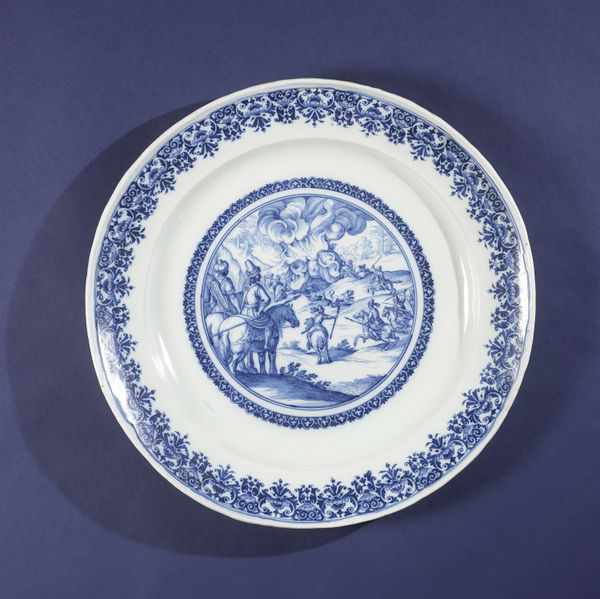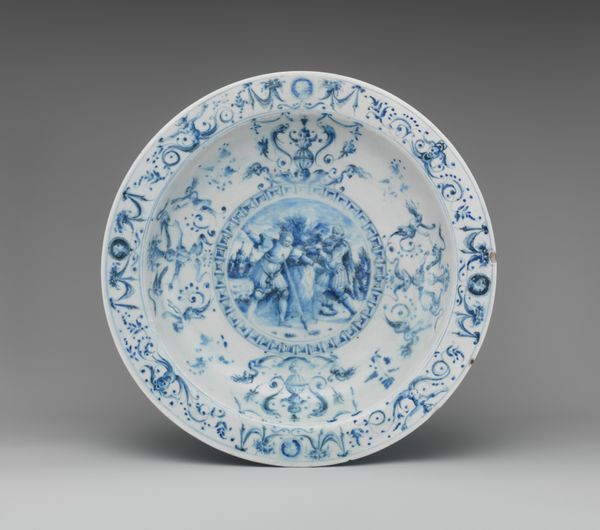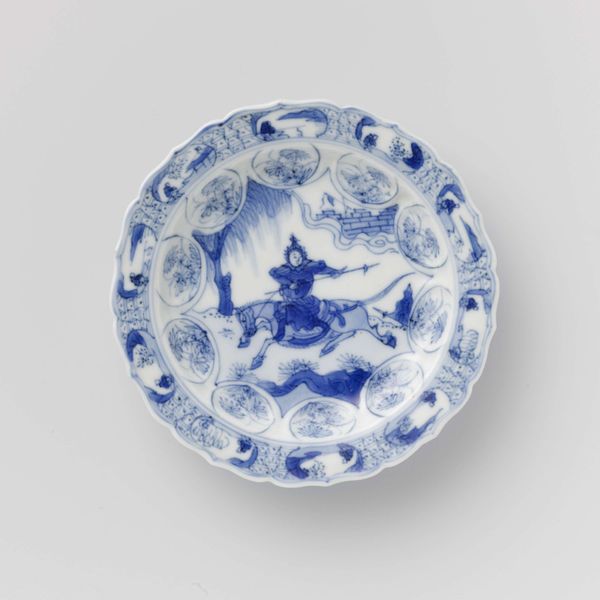
drawing, ceramic
#
drawing
#
dutch-golden-age
#
ceramic
#
ukiyo-e
#
stoneware
#
ceramic
#
islamic-art
#
watercolour illustration
#
genre-painting
Dimensions: diameter 37.7 cm, height 5.7 cm
Copyright: Rijks Museum: Open Domain
These two Delftware dishes were made in the Netherlands, using tin-glazed earthenware. The decoration, painted in cobalt oxide under the glaze, shows a detailed waterside scene. Delftware imitates Chinese porcelain, which was highly prized in Europe from the 17th century onwards, but costly to import. Dutch potters like Willem Jansz. Verstraeten developed techniques to mimic the porcelain look using local clay, tin oxide for a white glaze, and cobalt for the blue decoration. Delftware production involved a division of labor, with specialized workers for forming, glazing, and painting the designs. The dishes reflect the era's global trade. They were made to be beautiful and durable and to evoke the exotic allure of the East, as well as an appeal to national pride. The very making of this plate—using local materials to imitate imported luxury goods—shows how craft and industry were deeply intertwined with global commerce and cultural exchange.
Comments
rijksmuseum about 2 years ago
⋮
In the mid-17th century Dutch potters tried to produce earthenware that more closely resembled Chinese porcelain. They adapted the firing technique so that the dishes could be thinner, and the white tin glaze improved. While the painter of these dishes derived inspiration from Chinese porcelain, he added imaginary motifs, such as the pulpit and parts of the landscape.
Join the conversation
Join millions of artists and users on Artera today and experience the ultimate creative platform.
